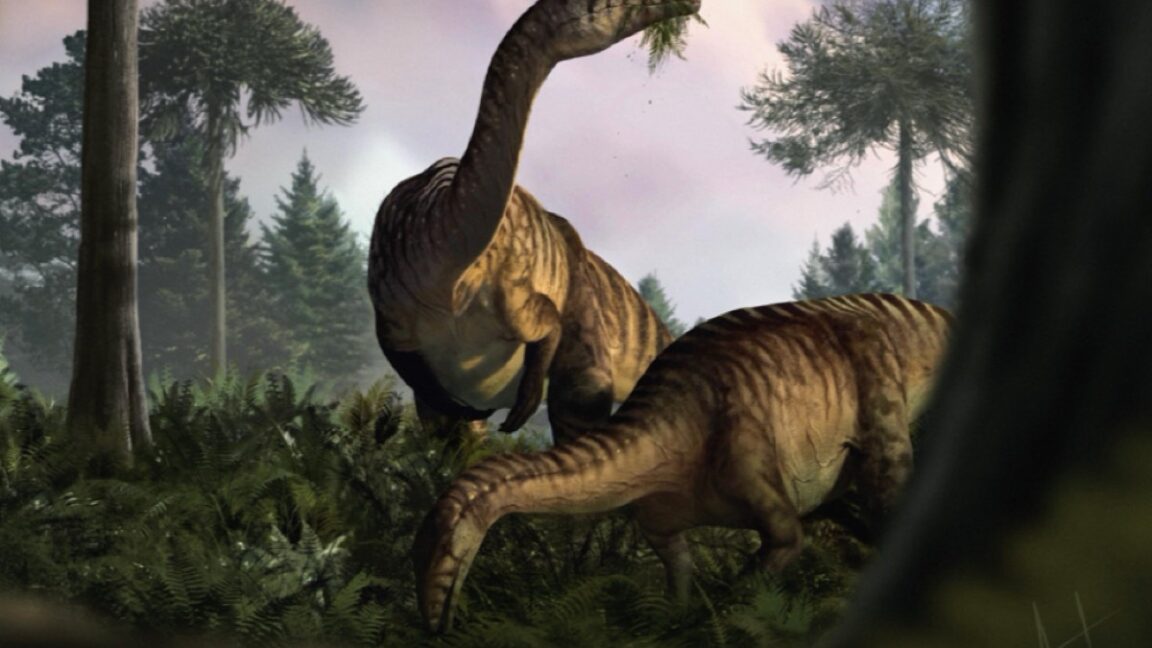Paleontologists have long puzzled over how the dinosaurs—originally relatively small and of minor importance to the broader ecosystem—evolved to become the dominant species some 30 million years later. Fossilized feces and vomit from dinosaurs might hold important clues to how and why this evolutionary milestone came about, according to a new paper published in the journal Nature.
Co-author Martin Qvarnström, an evolutionary biologist with Uppsala University in Sweden, and his collaborators studied trace fossils known as bromalites, a designation that includes coprolites as well as vomit or other fossilized matter from an organism’s digestive tract. As previously reported, coprolites aren’t quite the same as paleofeces, which retain a lot of organic components that can be reconstituted and analyzed for chemical properties. Coprolites are fossils, so most organic components have been replaced by mineral deposits like silicate and calcium carbonates.
For archaeologists keen on learning more about the health and diet of past populations—as well as how certain parasites evolved in the evolutionary history of the microbiome—coprolites and paleofeces can be a veritable goldmine of information. For instance, in 2021 we reported on an analysis of preserved paleo-poop revealing that ancient Iron Age miners in what is now Austria were fond of beer and blue cheese.




